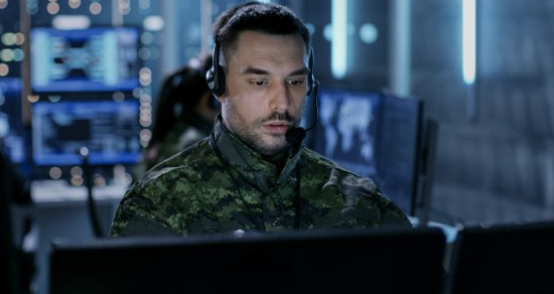Originally posted on VMware Blogs

Michael Crowley, EMEA director public sector, VMware
Ever faster technological change is setting the pace of society and defence is no exception. Indeed, the level of protection a state or a group of countries can provide to its citizens is directly correlated to its ability to embrace and use technological progress.
As a result, innovation in defence is now a key part of military and government strategy. It’s a topic I covered recently in NITECH, NATO’s in-house publication. The latest edition of which you can download here.
Responding to the call for innovation
There can be no doubt militaries are responding to the call for innovation. NATO itself recently announced that it is creating a $1 billion innovation fund that will invest in early-stage startups and venture capital funds developing “priority” technologies such as artificial intelligence, big-data processing, and automation. There are country specific examples of a similar desire for military innovation all over Europe.
In the UK, the Ministry of Defence recently launched a new Artificial Intelligence strategy, while at the time of writing, the same department has an open call specifically designed to garner ideas and proposals for innovation from those not specific to the Armed Forces. Elsewhere, Germany has earmarked just under half a billion for research and artificial intelligence within a $100 billion cash injection to the military. Irrespective of nation, the goal is identical – to harness new technical and practical ideas to innovate and improve the way we conduct military operations.
Fundamental to this is how the worlds of defence and technology interact. Specifically, how defence departments and governments pick up new ideas from tech companies and apply them to the challenges of warfare.
War – a catalyst for change
Earlier this year, a new hub designed to spark innovation and push the boundaries of technology used by the UK Armed Forces was opened. The Defence Battle Lab aims to bring together military personnel, academic institutions and private sector companies to trial and experiment cutting-edge technology. Only last month, the EU Commission announced plans to grant almost €1.2 billion to collaborative defence research and development projects selected under the European Defence Fund (EDF). This will support high-end defence capability projects such as the next generation of fighter aircrafts, tanks and ships, as well as critical defence technologies such as military cloud, AI, semiconductors, space, cyber or medical countermeasures.
We’re already seeing examples of innovation in defence today with the war in Ukraine. For example, Ukrainian forces have used 3D printers to add tail fins to Soviet-era anti-tank grenades. When dropped from an overhead commercial drone, these cheap and simple munitions can penetrate the relatively weak roof armor of Russian tanks and other vehicles. This innovative combination of cheap commercial and military technology offers a useful capability that can destroy Russian vehicles costing hundreds of thousands or millions of dollars for the price of a $100 grenade and a $1,000 drone.
Rightly or wrongly, it is proving beyond doubt that war is a catalyst for change.
Addressing three challenges
But to realise the potential impact of change also means embracing failure – something that is the total antithesis to the military frame of mind. Failure is such an essential factor in innovation that one cannot happen without the other, so military leaders must ensure that effective systems are in place to reward creativity and risk-taking at all levels.
This means addressing several challenges, the first of which is procurement. Agile technology needs to be obtained in agile ways. The days of government departments being tied into rigid and long-lasting technology vendor contracts must end. Defence leaders need flexible, cost-effective procurement arrangements if they’re to rapidly change direction and adopt emerging technologies.
For innovation in the military to be truly realised, it also requires next-generation networks: Forces need data-sharing with colleagues, allies and partners to be friction-free, with the ability to instantaneously analyse and act on data in the field. New network architectures, that are intrinsically secure by design and interoperable across domains, are essential. And finally, it also requires collaboration. Defence leaders must find a posture of ongoing innovation, through their relationships with technology partners, to ensure that digital capability always stays ahead of that held by adversaries.
Innovative by instinct
A multi- cloud foundation for any app is the basis for this vision to be realised as it is central to collecting, processing, storing and sharing information. Based on situational awareness – collecting information from different sources – obtained from everything from drone satellites to the man on the ground – defence teams collect information that needs to be processed. This, in turn, informs the directives or orders issued to troops with the information dissipated through a set of connected clouds depending on the countries involved and the specifics of the orders.
Yet funding, embracing technologies like the cloud and having a desire to innovate is only half the battle (no pun intended). To be truly future-proofed, military organisations must engage in – and be aligned to – a cycle of innovation in the field. They must create a scenario whereby innovation is constantly embraced and the barriers to its adoption and deployment reduced to nil. This means developing innovation as a capability in its own right and becoming an organisation which is ‘innovative by instinct’.
You can read more on this in the latest edition of NITECH, which you can download here. Alternatively, to find out how VMware can support your defence programme, please contact me at mcrowley@vmware.com.








